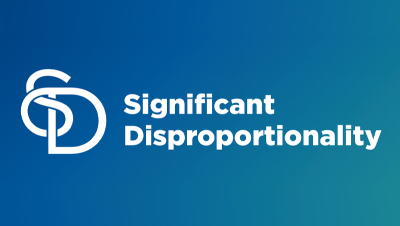
Resource Library
Guides. Briefs. Toolkits. Quick reference information. IDC and its partners created these data quality resources to help states better prepare to address their existing or emerging IDEA data quality needs. Use our search and filtering tools to navigate the library.
Resources 1 - 7 of 15
Format: Quick Reference
Comprehensive IDC Part B Tool & Product ListThis resource is a list of IDC produced Part B tools and products arranged by topic area. The list provides a brief description and link to each tool or product. Users can quickly scan for useful tools and products to ensure that they have explored all of the many Part B available resources that IDC has produced.
Format: Quick Reference
FFY 2020–2025 SPP/APR Resources At-a-GlanceThe FFY 2020–2025 SPP/APR Resources At-a-Glance is a list of resources from OSEP and IDC that states can use to support their understanding and actions related to the FFY 2020–2025 Part B SPP/APR.
Format: Quick Reference
Significant Disproportionality ResourcesThe Equity in IDEA regulations require states to determine annually if local education agencies (LEAs) are identified with significant disproportionality. The regulations outline specific requirements related to methods for identifying LEAs and activities the LEAs must complete after they are identified. These significant disproportionality resources can assist states with implementing these requirements and supporting LEAs through the process of meeting the requirements.
Format: Guides and Briefs
Building Your SPP/APR Stakeholder Engagement Plan: 10 Essential QuestionsBuilding Your SPP/APR Stakeholder Engagement Plan: 10 Essential Questions can help states develop and report on authentic and broad stakeholder engagement as required in the FFY 2020–2025 SPP/APR. This interactive resource guides states through 10 key questions they should be asking themselves as they build their stakeholder engagement plans. Each question provides detailed options to consider that will assist states in preparing to describe their engagement activities in their SPPs/APRs.
Format: Quick Reference
Navigating Uncharted Waters: Engaging Stakeholders in Part B Indicator 3 Baseline and Target SettingThis customizable resource includes a PowerPoint template and presentation notes that provide states with an overview of the Part B SPP/APR reporting changes to Indicator 3, which addresses participation and performance of children with individualize education programs (IEPs) on statewide assessments. The resource reviews the new requirements related to stakeholders, particularly parents, in the SPP/APR and implications for Indicator 3 and shares strategies for engaging stakeholders in the optional baseline and required target setting processes. States are able to customize the information in the PowerPoint to reflect their own contexts and to meet the needs of different audiences.
Format: Toolkits
Success Gaps Toolkit: Addressing Equity, Inclusion, and OpportunityThe Success Gaps Toolkit presents a process for using data and the Success Gap Rubric to identify root causes of gaps between groups of children in districts or schools. These success gaps occur when the education system is not meeting the needs of all groups of children and outcomes for some groups are different than outcomes for most groups. The toolkit, with its process and materials, provides a manageable and defined way for districts or schools to identify success gaps that are present and their root causes and then make a plan for addressing the gaps. The success gaps may be the graduation rate of students who are English learners compared to the rate of all other children, the out-of-school suspension rate of children who are Black compared to the rate of all other children, the identification of children who are Hispanic as children with specific learning disabilities compared to the identification of all other children, and other gaps.
Format: Guides and Briefs
Success Gaps Rubric: Addressing Equity, Inclusion, and OpportunityThis rubric allows a team of users from a district or school to systematically examine the root causes of success gaps among groups of students by focusing on equity, inclusion, and opportunity. The recently updated rubric now includes considerations for children as young as preschool age. A complementary white paper provided the research-based background that supported development of the rubric.







